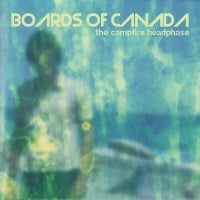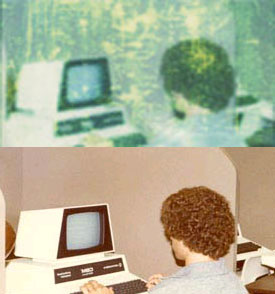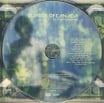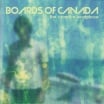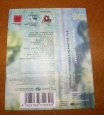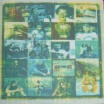Difference between revisions of "The Campfire Headphase"
(→Artwork) |
|||
| (17 intermediate revisions by 10 users not shown) | |||
| Line 1: | Line 1: | ||
| + | __TOC__ | ||
| + | |||
{{Infobox Release| | {{Infobox Release| | ||
| + | | cover=The Campfire Headphase album cover.jpg | ||
| name=The Campfire Headphase | | name=The Campfire Headphase | ||
| image=thecampfireheadphase.jpg | | image=thecampfireheadphase.jpg | ||
| Line 8: | Line 11: | ||
| runtime=62:05 (standard)<br>67:02 (japanese) | | runtime=62:05 (standard)<br>67:02 (japanese) | ||
}} | }} | ||
| − | |||
| − | |||
In 2005, Boards of Canada released their third studio album, titled '''The Campfire Headphase'''. Perhaps the most organic of their publicly available output, The Campfire Headphase represents a significant departure both in mood and timbre from its predecessor, Geogaddi. "We decided to make an escapist soundtrack," Michael Sandison said in a 2005 Playlouder [[interview]], "like a kind of sanctuary; a day-glo vista you can visit by putting the record on." | In 2005, Boards of Canada released their third studio album, titled '''The Campfire Headphase'''. Perhaps the most organic of their publicly available output, The Campfire Headphase represents a significant departure both in mood and timbre from its predecessor, Geogaddi. "We decided to make an escapist soundtrack," Michael Sandison said in a 2005 Playlouder [[interview]], "like a kind of sanctuary; a day-glo vista you can visit by putting the record on." | ||
| Line 19: | Line 20: | ||
Indeed, the brothers have admitted several times in interviews that the North American landscape (and its music) heavily influenced the direction of The Campfire Headphase. "This time we set out to make something simple that had shades of a road movie soundtrack, like the musical score to a surreal journey across a late 70's North American desert highway," Michael Sandison explains, also characterizing the record as something "like a futuristic western or something...but [always with] something subtle and surreal going on in the tracks to remind you that you're hearing something that has been tainted or spiked in some way by unfathomable futuristic technology. It's maybe like campfire music played by android cowboys." | Indeed, the brothers have admitted several times in interviews that the North American landscape (and its music) heavily influenced the direction of The Campfire Headphase. "This time we set out to make something simple that had shades of a road movie soundtrack, like the musical score to a surreal journey across a late 70's North American desert highway," Michael Sandison explains, also characterizing the record as something "like a futuristic western or something...but [always with] something subtle and surreal going on in the tracks to remind you that you're hearing something that has been tainted or spiked in some way by unfathomable futuristic technology. It's maybe like campfire music played by android cowboys." | ||
| − | But whatever the synthetic undercurrent, The Campfire Headphase is noticeably lacking in one of Boards of Canada's signature sounds: children's voices. "That was a deliberate thing," Marcus explained to Earplug magazine. "We got fed up with people saying that we're a formulaic band that you could kind of describe in a couple of sentences...I think it can become really dangerous for a band if you don't have a certain level of self-consciousness about these things. You always have to stay a few steps in front of your audience. We always have people putting fakes on the Internet before a new record is released, and the fakes are always really electronic with little kids' voices and things like that. Probably next time around all the fakes will include wobbly guitars like the ones we use on the new album [The Campfire Headphase] (laughs)." | + | But whatever the synthetic undercurrent, [[The Campfire Headphase]] is noticeably lacking in one of [[Boards of Canada]]'s signature sounds: children's voices. "That was a deliberate thing," Marcus explained to Earplug magazine. "We got fed up with people saying that we're a formulaic band that you could kind of describe in a couple of sentences...I think it can become really dangerous for a band if you don't have a certain level of self-consciousness about these things. You always have to stay a few steps in front of your audience. We always have people putting fakes on the Internet before a new record is released, and the fakes are always really electronic with little kids' voices and things like that. Probably next time around all the fakes will include wobbly guitars like the ones we use on the new album [[The Campfire Headphase]] (laughs)." |
| − | This sort of self-conscious reaction, however, may account in part for why opinion on this record has been so divided. When asked by Pitchfork about whether or not the brothers feared being pigeonholed, Michael responded that "[t]he new record is probably the slowest record that we've done. And it's got guitars on it as well. This is something that we've done slightly deliberately. We knew that we had to break away from this thing [being pigeonholed]. It bothered us that if you go into the big stores our stuff is always sitting in the dance music section. We never made a dance record in our entire career but our stuff still gets thrown in there. Our drive with this record is to try and get us out of the dance section and into the main section with all the | + | This sort of self-conscious reaction, however, may account in part for why opinion on this record has been so divided. When asked by Pitchfork about whether or not the brothers feared being pigeonholed, Michael responded that "[t]he new record is probably the slowest record that we've done. And it's got guitars on it as well. This is something that we've done slightly deliberately. We knew that we had to break away from this thing [being pigeonholed]. It bothered us that if you go into the big stores our stuff is always sitting in the dance music section. We never made a dance record in our entire career but our stuff still gets thrown in there. Our drive with this record is to try and get us out of the dance section and into the main section with all the other bands, like ABBA and A-Ha. We're just a band. Not an IDM band, not an electronic band, and not a dance band." |
This conscious break with the conventions of the so-called IDM/Dance aesthetic (which so informed their previous work) have lead many to describe the record as boring or watered down. Pitchfork's Mark Richardson complained that "Campfire is a sluggish record, weary, pointed edges dulled as if by the march of time. Boards could previously be counted on to offer a display of crisp, forceful drum programming to jar you out of your narcotic haze ("Telephasic Workshop" and "Gyroscope"). The Campfire Headphase is all midrange, the mid-tempo shuffles putting the mind-boggling array of instrumental processing front and center." | This conscious break with the conventions of the so-called IDM/Dance aesthetic (which so informed their previous work) have lead many to describe the record as boring or watered down. Pitchfork's Mark Richardson complained that "Campfire is a sluggish record, weary, pointed edges dulled as if by the march of time. Boards could previously be counted on to offer a display of crisp, forceful drum programming to jar you out of your narcotic haze ("Telephasic Workshop" and "Gyroscope"). The Campfire Headphase is all midrange, the mid-tempo shuffles putting the mind-boggling array of instrumental processing front and center." | ||
Yet for some, the very same departure yields the record its charm, even garnering some textural comparison to My Bloody Valentine's classic "Loveless." Differences of opinion aside, the record continues to be a favorite among many fans, and in any case, probably our best indicator of what is yet to come. | Yet for some, the very same departure yields the record its charm, even garnering some textural comparison to My Bloody Valentine's classic "Loveless." Differences of opinion aside, the record continues to be a favorite among many fans, and in any case, probably our best indicator of what is yet to come. | ||
| − | |||
| − | |||
| − | |||
| − | |||
| − | |||
| − | |||
| − | |||
| − | |||
| − | |||
| − | |||
| − | |||
| − | |||
| − | |||
==Tracks== | ==Tracks== | ||
| Line 58: | Line 46: | ||
# "[[Farewell Fire]]" – 8:26 | # "[[Farewell Fire]]" – 8:26 | ||
# "[[Macquarie Ridge]]" – 4:57 (Japanese release only) | # "[[Macquarie Ridge]]" – 4:57 (Japanese release only) | ||
| + | |||
| + | == Artwork == | ||
| + | [[Image:TCH yearbook comparison.jpg|thumb|right|''TCH'' inset image (top), IIT yearbook photo (bottom)]] | ||
| + | The liner notes include a grid-like collage of apparently seventies-era photos, degraded in a manner similar to the cover. The source of a few of these images have been discovered: | ||
| + | |||
| + | * A photo of a curly-haired man sitting at an [[wikipedia:Commodore International|Commodore]] CBM 2001 computer was taken from a 1979 yearbook photo from the [[wikipedia:Illinois Institute of Technology|Illinois Institute of Technology]]. [http://forum.watmm.com/index.php?showtopic=8386] [http://web.archive.org/web/20070228221147/http://www.iit.edu/alumni/updates/yearbook/1970s/images/campus%20and%20student%20in%20computer%20center%201979.jpg] | ||
| + | * A photo of blonde-haired woman in profile was taken from a 1972 anti-drug propaganda film called ''[http://www.archive.org/details/social_seminar_tom Social Seminar: Tom]''. A sample of dialogue from the film was also used towards the end of the album track "[[Chromakey Dreamcoat]]". | ||
| + | |||
| + | == Comments and Trivia== | ||
| + | |||
| + | *When asked if the record (and especially its artwork) was a throw back to Music Has the Right to Children, Marcus replied that "it's deliberately reminiscent of ‘Music Has the Right to Children'. Musically it's like an echo of that record, all bleached-out blue skies and so on. In some ways it sounds older than ‘Music Has the Right…' because of the choice of instruments and the sheer amount of damage we've done to the sound." | ||
| + | |||
| + | *The bottom left corner of the front cover (and onto the spine of the digipak) has a smudge that strongly resembles the hexagonal Geogaddi cover. The front and back covers are repeated in the smaller pictures inside the digipak. The smaller pictures are less distorted than the covers. | ||
| + | |||
| + | *On the vinyl release, a bird's chirp can be heard in the runout grooves, typically sides C and D. | ||
| + | |||
| + | *Playing the vinyl release at 45rpm evokes a completely different listening experience. | ||
| + | |||
| + | *When inverting the colors on the back cover art, the child's expression changes into a ghostly, almost horrified, stare. | ||
=== Reviews === | === Reviews === | ||
| Line 73: | Line 80: | ||
* ''[http://www.warprecords.com/mart/music/release.php?cat=WARP123 The Campfire Headphase]'' at WarpMart | * ''[http://www.warprecords.com/mart/music/release.php?cat=WARP123 The Campfire Headphase]'' at WarpMart | ||
* ''[http://bleep.com/?bleep=WARP123 The Campfire Headphase]'' at Bleep.com | * ''[http://bleep.com/?bleep=WARP123 The Campfire Headphase]'' at Bleep.com | ||
| + | |||
| + | == Artwork == | ||
| + | <DynamicPageList> | ||
| + | category = The Campfire Headphase artwork | ||
| + | namespace=file | ||
| + | ordermethod = created | ||
| + | imagewidth=104 | ||
| + | galleryshowfilesize=yes | ||
| + | galleryshowfilename=yes | ||
| + | imagesperrow=6 | ||
| + | mode=gallery | ||
| + | </DynamicPageList> | ||
[[Category: The Campfire Headphase]] | [[Category: The Campfire Headphase]] | ||
{{Nav-Releases}} | {{Nav-Releases}} | ||
Latest revision as of 11:26, 17 November 2017
In 2005, Boards of Canada released their third studio album, titled The Campfire Headphase. Perhaps the most organic of their publicly available output, The Campfire Headphase represents a significant departure both in mood and timbre from its predecessor, Geogaddi. "We decided to make an escapist soundtrack," Michael Sandison said in a 2005 Playlouder interview, "like a kind of sanctuary; a day-glo vista you can visit by putting the record on."
In place of the dense and highly electronic nature of Geogaddi, The Campfire Headphase favors a more stripped-down, acoustic approach, with a significantly reduced use of synthesizers. As Marcus pointed out to Playlouder magazine: "There's less use of synths on this record. We've leaned heavily towards a whole 'played, taped and sampled' backdrop this time. I guess sampling for us is different from a lot of other bands, because we routinely sample ourselves rather than other records, so most of the sound generation is coming from real instruments that we played ourselves, mostly recorded with microphones, and a lot of location recording. What you hear on the record is kind of a wall of sound created by sampling as many gnarled acoustic sources [as] we could find."
The most obvious of these acoustic sources is the frequent (and recognizable) use of guitar on TCHP. "With the new album," Marcus explains,"we deliberately went for a lo-fi guitar sound on a few of the tracks because we were going for a sun-bleached, Californian summer kind of sound, it's almost reminiscent of a Joni Mitchell sound in places."
Indeed, the brothers have admitted several times in interviews that the North American landscape (and its music) heavily influenced the direction of The Campfire Headphase. "This time we set out to make something simple that had shades of a road movie soundtrack, like the musical score to a surreal journey across a late 70's North American desert highway," Michael Sandison explains, also characterizing the record as something "like a futuristic western or something...but [always with] something subtle and surreal going on in the tracks to remind you that you're hearing something that has been tainted or spiked in some way by unfathomable futuristic technology. It's maybe like campfire music played by android cowboys."
But whatever the synthetic undercurrent, The Campfire Headphase is noticeably lacking in one of Boards of Canada's signature sounds: children's voices. "That was a deliberate thing," Marcus explained to Earplug magazine. "We got fed up with people saying that we're a formulaic band that you could kind of describe in a couple of sentences...I think it can become really dangerous for a band if you don't have a certain level of self-consciousness about these things. You always have to stay a few steps in front of your audience. We always have people putting fakes on the Internet before a new record is released, and the fakes are always really electronic with little kids' voices and things like that. Probably next time around all the fakes will include wobbly guitars like the ones we use on the new album The Campfire Headphase (laughs)."
This sort of self-conscious reaction, however, may account in part for why opinion on this record has been so divided. When asked by Pitchfork about whether or not the brothers feared being pigeonholed, Michael responded that "[t]he new record is probably the slowest record that we've done. And it's got guitars on it as well. This is something that we've done slightly deliberately. We knew that we had to break away from this thing [being pigeonholed]. It bothered us that if you go into the big stores our stuff is always sitting in the dance music section. We never made a dance record in our entire career but our stuff still gets thrown in there. Our drive with this record is to try and get us out of the dance section and into the main section with all the other bands, like ABBA and A-Ha. We're just a band. Not an IDM band, not an electronic band, and not a dance band."
This conscious break with the conventions of the so-called IDM/Dance aesthetic (which so informed their previous work) have lead many to describe the record as boring or watered down. Pitchfork's Mark Richardson complained that "Campfire is a sluggish record, weary, pointed edges dulled as if by the march of time. Boards could previously be counted on to offer a display of crisp, forceful drum programming to jar you out of your narcotic haze ("Telephasic Workshop" and "Gyroscope"). The Campfire Headphase is all midrange, the mid-tempo shuffles putting the mind-boggling array of instrumental processing front and center."
Yet for some, the very same departure yields the record its charm, even garnering some textural comparison to My Bloody Valentine's classic "Loveless." Differences of opinion aside, the record continues to be a favorite among many fans, and in any case, probably our best indicator of what is yet to come.
Tracks[edit]
- "Into the Rainbow Vein" – 0:44 (Bleep preview)
- "Chromakey Dreamcoat" – 5:47
- "Satellite Anthem Icarus" – 6:04
- "Peacock Tail" – 5:24
- "Dayvan Cowboy" – 5:00
- "A Moment of Clarity" – 0:51
- "'84 Pontiac Dream" – 3:49
- "Sherbet Head" – 2:41
- "Oscar See through Red Eye" – 5:08
- "Ataronchronon" – 1:14
- "Hey Saturday Sun" – 4:56
- "Constants Are Changing" – 1:42
- "Slow This Bird Down" – 6:09
- "Tears from the Compound Eye" – 4:03
- "Farewell Fire" – 8:26
- "Macquarie Ridge" – 4:57 (Japanese release only)
Artwork[edit]
The liner notes include a grid-like collage of apparently seventies-era photos, degraded in a manner similar to the cover. The source of a few of these images have been discovered:
- A photo of a curly-haired man sitting at an Commodore CBM 2001 computer was taken from a 1979 yearbook photo from the Illinois Institute of Technology. [1] [2]
- A photo of blonde-haired woman in profile was taken from a 1972 anti-drug propaganda film called Social Seminar: Tom. A sample of dialogue from the film was also used towards the end of the album track "Chromakey Dreamcoat".
Comments and Trivia[edit]
- When asked if the record (and especially its artwork) was a throw back to Music Has the Right to Children, Marcus replied that "it's deliberately reminiscent of ‘Music Has the Right to Children'. Musically it's like an echo of that record, all bleached-out blue skies and so on. In some ways it sounds older than ‘Music Has the Right…' because of the choice of instruments and the sheer amount of damage we've done to the sound."
- The bottom left corner of the front cover (and onto the spine of the digipak) has a smudge that strongly resembles the hexagonal Geogaddi cover. The front and back covers are repeated in the smaller pictures inside the digipak. The smaller pictures are less distorted than the covers.
- On the vinyl release, a bird's chirp can be heard in the runout grooves, typically sides C and D.
- Playing the vinyl release at 45rpm evokes a completely different listening experience.
- When inverting the colors on the back cover art, the child's expression changes into a ghostly, almost horrified, stare.
Reviews[edit]
- CD Times review by Mark Thompson
- New Noise review by Jim Merrett
- Pitchfork review by Mark Richardson
- Brainwashed review by Matthew Jeanes
- Allmusic review by John Bush
- BBC review by Colin Buttimer
- Texture review
- Igloo Magazine review by Gabriel Weinstock
- The Observer review by Simon Reynolds
External links[edit]
- The Campfire Headphase at WarpMart
- The Campfire Headphase at Bleep.com
Artwork[edit]
WARPCD123-overview-2.jpg 147 KB
WARPCD123-overview-1.jpg 131 KB
WARPCD123-text.jpg 929 KB
WARPCD123-inlay-5.jpeg 73 KB
WARPCD123-inlay-4.jpeg 74 KB
WARPCD123-inlay-3.jpeg 73 KB
WARPCD123-inlay-2.jpeg 73 KB
WARPCD123-tray.jpeg 73 KB
WARPCD123-inlay-1.jpeg 76 KB
WARPCD123-disc.jpeg 86 KB
WARPLP123-vinyl-3.jpeg 131 KB
WARPLP123-vinyl-2.jpeg 127 KB
WARPLP123-vinyl-1.jpeg 132 KB
WARPLP123-side-4.jpeg 98 KB
WARPLP123-side-3.jpeg 109 KB
WARPLP123-side-2.jpeg 112 KB
WARPLP123-side-1.jpeg 105 KB
BRC-139-back.jpeg 40 KB
BRC-139-front.jpeg 33 KB
Boc-tch-promo-poster.jpg 117 KB
Thc-japanese-poster.jpg 43 KB
Thc-japanese.inlay.jpg 53 KB
Thc-japanese.cover.jpg 88 KB
Tch-postcard-02.jpg 293 KB
Tch-postcard-01.jpg 263 KB

